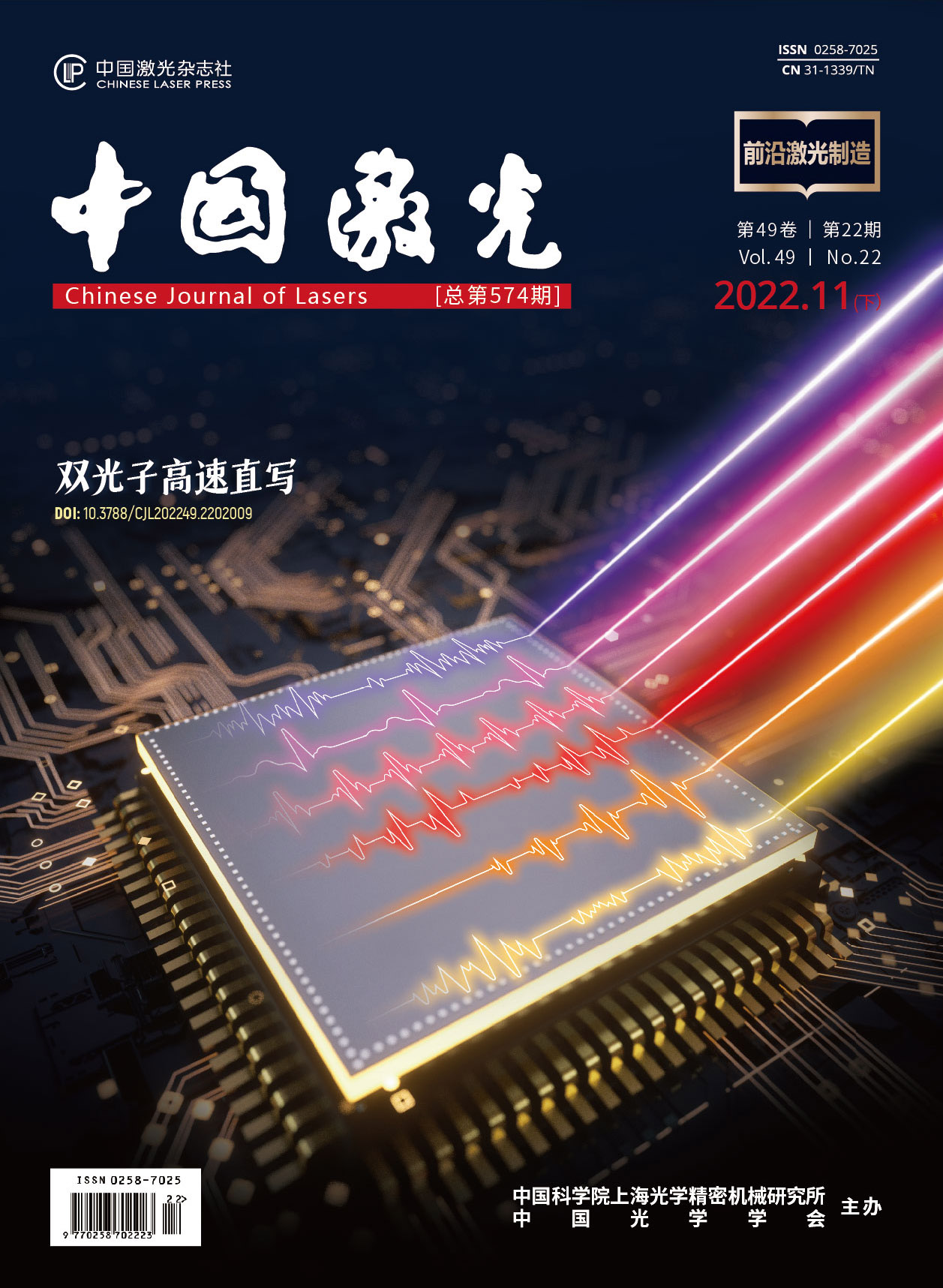脉冲激光冲击液滴变形和破裂的数值仿真  下载: 540次
下载: 540次
Droplet fragmentation is a common natural phenomenon. The study on droplet deformation and rupture caused by pulsed laser impact has not only theoretical importance in fluid mechanics but also practical application value in industrial fields. In the field of extreme ultraviolet nanolithography, it is required to understand the dynamic response of droplets to laser pulse impact to optimize the laser-produced plasma light sources. A laser-induced phase change is a method for moving liquids by optical radiation, allowing for large deformations and flow speeds. In this process, the speed distribution generated by the pulse within the droplet is a crucial factor influencing the droplet deformation and fragmentation. However, less attention has been paid to this speed distribution. Here, the effect of speed field formed by laser impacting droplets on droplet deformation and propulsion is mainly studied.
Based on a physical model of the interaction between the laser and the droplet, numerical simulation is employed to investigate the influence of speed fields formed under various laser energies on the droplet deformation and propulsion. Employing the volume of fluid approach, combined with the laminar flow model, the primary characteristics of deformation and the precise details of flow are determined. The pressure implicit with the splitting of operators is employed to solve the problem. The pressure staggering option discretization scheme for pressure is employed. The pressure staggering option discretization gives more accurate findings since interpolation errors and pressure gradient assumptions on boundaries are avoided. For cases with strong surface tension and a high density ratio, this scheme works better. The momentum is discretized by employing the second-order upwind scheme and the volume fraction equation is discretized by the geometric reconstruction scheme. Meanwhile, a Rayleigh-Taylor instability analysis is performed to estimate the dependences of droplet deformation and breakup time on the Weber number. The kinetic process of droplet fragmentation is qualitatively examined.
In the validation simulations, the obtained droplet propulsion speed are generally consistent with experimental results (Fig. 4). Then, a Gaussian-type initial speed distribution is set up inside the droplet. The time evolution of droplet deformation when We=4921.6 is demonstrated in (Fig. 5). Because of the Rayleigh-Taylor instability, the axial thickness of droplet gradually compresses with time, while the radial radius gradually stretches with time. The laser-induced drop deformation mainly depends on the Weber number. The time evolutions of droplet deformation parameters (Fig. 6) show the relationship between the rupture time and the Weber number. The thin layer radius and rim rupture time for droplets are in general agreement with theoretical models. The findings reveal that when the Weber number increases, the droplet deformation becomes more severe. A thinner sheet is formed in shorter time with a larger radial expansion radius. Furthermore, the greater the forward motion, the smaller the corresponding rupture time. This speed distribution can be employed to simulate the deformation dynamics of droplet impacted by laser in a moderately focused state. The early-time laser-matter interaction influences late-time fragmentation. The droplet advances without overall fragmentation at a Weber number below 110.7. The higher the Weber number, the greater the corresponding speed in the flow field, the more drastic the droplet deformation, and the smaller the debris formed by droplet rupture (Fig. 7). Additionally, after droplet fragmentation, due to the vortex volume, there are interesting phenomena including spin, fusion, and rupture of fine droplets.
In this research, numerical simulation is employed to investigate the influence of speed fields formed under various laser energies on droplet deformation and propulsion. The droplet’s response to laser shock is modulated by laser energy and spatial distribution (the Weber number and the speed distribution inside the droplet). Meanwhile, a Rayleigh-Taylor instability analysis is performed to estimate the dependences of droplet deformation and breakup time on the Weber number. The kinetic process of droplet fragmentation is qualitatively examined. Understanding these dynamics is required in the field of droplet target shaping to predict the maximum target surface size before disintegration at given laser parameters.
文洲, 陆健, 张宏超, 唐懋. 脉冲激光冲击液滴变形和破裂的数值仿真[J]. 中国激光, 2022, 49(22): 2202008. Zhou Wen, Jian Lu, Hongchao Zhang, Mao Tang. Numerical Simulation on Deformation and Rupture of Liquid Droplet Impacted by Pulsed Laser[J]. Chinese Journal of Lasers, 2022, 49(22): 2202008.







